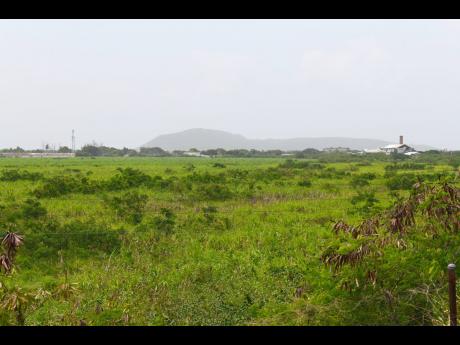David Salmon | Unplanned Growth: The solution to urban sprawl in Jamaica – Pt 2
An integrated approach, characterised by institutional reform, enforcement and targeted investment, is needed to stem the challenge of uncontrolled urban sprawl in Jamaica. Therefore, the solution is CLEAR – Coordinated Planning, Legalisation and Enforcement, Appropriate Development and Resource Maximisation.
Coordinated Planning
Planning done on the backdrop of a National Spatial Plan will ensure that the needs of the whole nation are taken into consideration when allocating services and directing development. It will guarantee systematic expansion that is not too centralised in its scope. As it stands, there is no assurance to prevent additional construction from taking place in the wider Bernard Lodge Estate area, which is the location of vast groundwater resources. What the development master plan does indicate is the incredible potential that exists for more construction to take place with several stakeholders already interested in this prospect. Thus, it is fair to assume that the country’s water resources will be jeopardised in the future due to subsequent development.
This would be harmful as “Jamaica has not had a significant investment in its water resources since the 1940s”, as highlighted by Gordon Robinson in his Gleaner article published on May 26, 2019. In Robinson’s view, the prime minister’s announcement of the construction of an additional water treatment plant would be insufficient given that the country’s population has increased by 200 per cent since the 1940s. Hence, protecting the country’s existing water resources is sacrosanct. Before additional construction takes place, a multi-sector development plan must be drafted that prioritises the protection of our limited resources. Moreover, investing in water security should be a priority for any long-term development plan for the country.
Legislation and Enforcement
The tabling of the National Environment Protection Act should be of utmost importance. In this legislation, the National Environment and Planning Agency (NEPA) should be given legal authority with a clearly defined role. NEPA should also be streamlined to create an expanded capacity for oversight and monitoring which will contribute to transparency.
Sanctions for breaches of the environmental laws should be increased to act as a deterrent to actors who harm the environment. In other words, the law should have teeth to devour perpetrators. Furthermore, NEPA should be required to provide frequent state-of-the-environment reports as the last report was published in 2013.
Appropriate Development
The priority of the Government should be the creation of new towns versus traditional housing schemes. New towns are self-contained, independent satellite settlements that possess their own town centre, amenities, social services and commercial activities. These towns should also have corresponding free zones to accompany them in order to increase nearby employment opportunities. The aim is to remove the need for people to venture outside of their community to meet their basic needs. This would limit the number of commuters travelling to major urban centres contributing to reduced pollution from vehicle exhaust. The development of new towns represents a coordinated approach to development. The Greater Bernard Lodge (GBL) Master Plan already provides the template for this design which can be used for creating other towns instead of expanding existing ones like Portmore.
For more urbanised spaces, zoning density should be increased to ensure that housing utilises less space. The building code should be changed to facilitate the construction of more high-rise and mixed-use buildings. Target 11.3 of the United Nations Sustainable Development Goals states that countries, “by 2030 (should) enhance inclusive and sustainable urbanisation and capacity for participatory, integrated and sustainable human settlement planning and management”. Therefore, these examples of appropriate development solutions are in line with the overall goals of sustainable development.
Resource Maximisation
The implementation of green belts rectifies excessive urban sprawl as it focuses on the maximisation of resources. Green belts refer to physical areas of open space, including farmlands, forests or other green spaces, that surround a metropolitan area and are intended to be permanent barriers to urban expansion (Bengston and Young 2006). Cities such as London, Barcelona, Toronto, Seoul, and Hong Kong have all incorporated green belts in their design.
Since green belts, constrict the outward expansion of cities, greater emphasis is placed on utilising land sustainably in order for more people to benefit from the resource further contributing to better planned urban spaces. Additionally, implementing green belts across the island can aid the prime minister in his quest to plant three million trees over three years as legally enforced green belts provide a secure space for this initiative’s implementation. Other benefits of green belts include an increase in air quality, improved city aesthetics, reduced carbon emissions and an expanded environment for flora and fauna.
It is the position of this writer that a CLEAR approach should be taken for Jamaica to be a true hub for sustainable and inclusive development.
David Salmon is a first-year public policy and management student at The University of the West Indies and the 2019 recipient of the Morris Cargill Award for Opinion Journalism. To send feedback, he may be contacted at davidsalmon@live.com.

